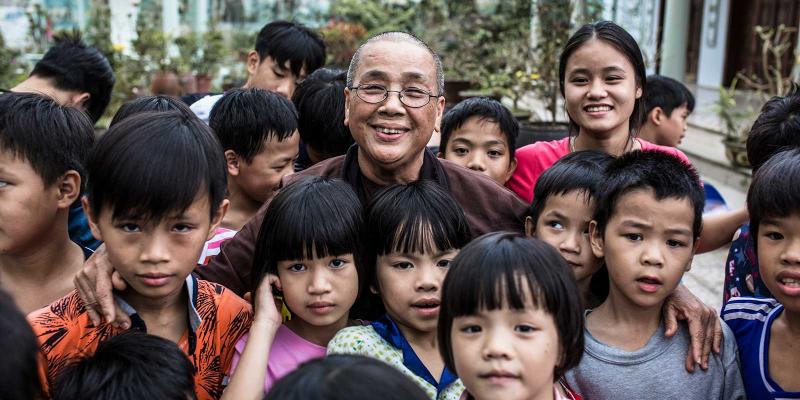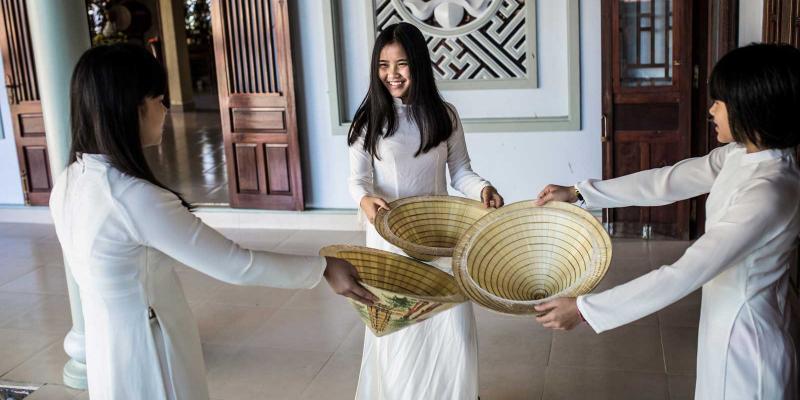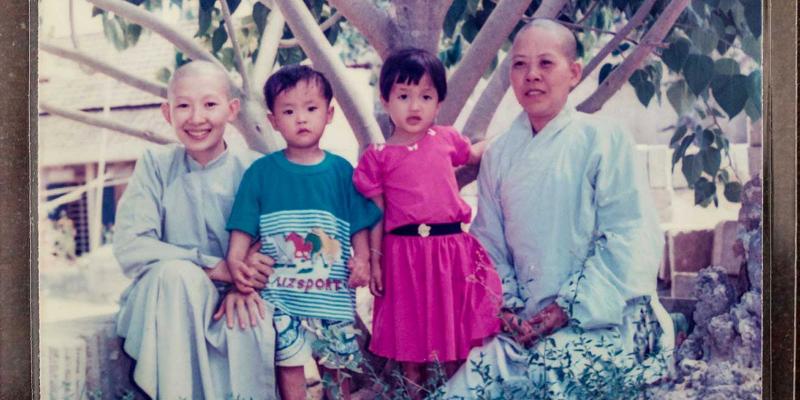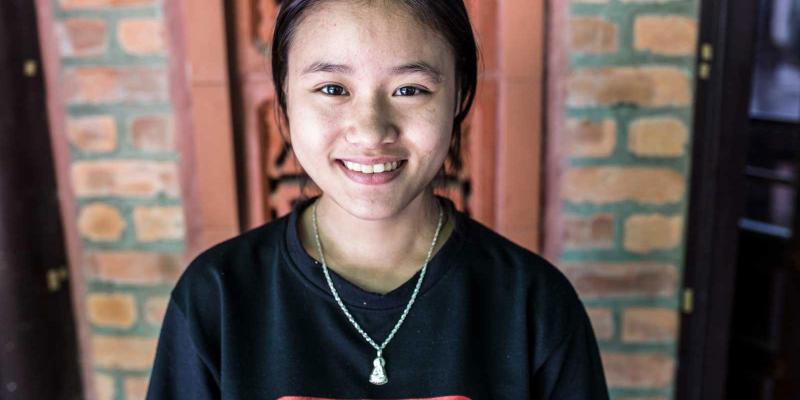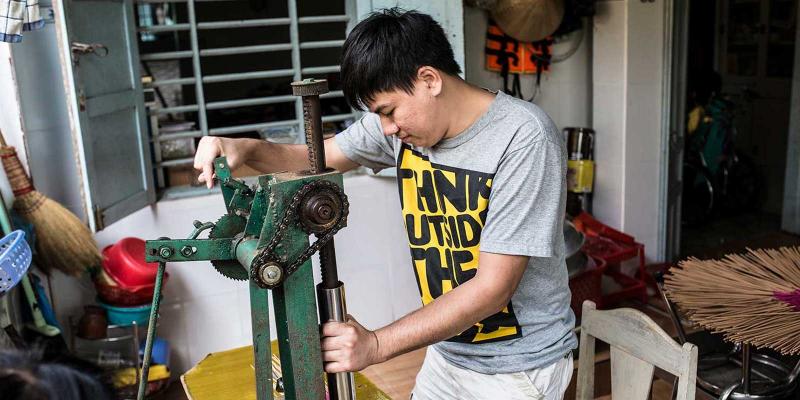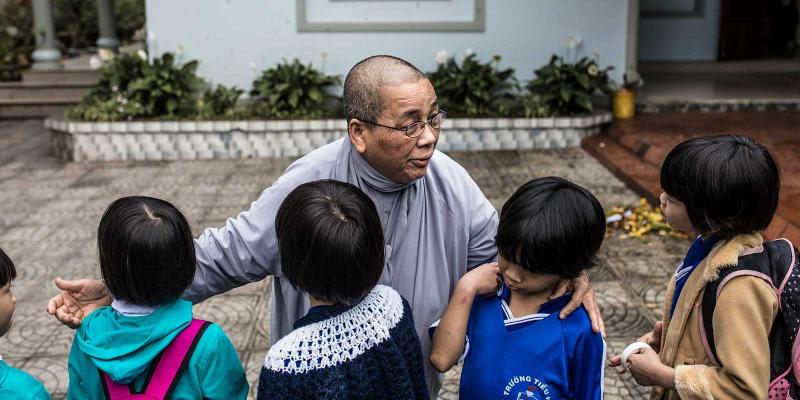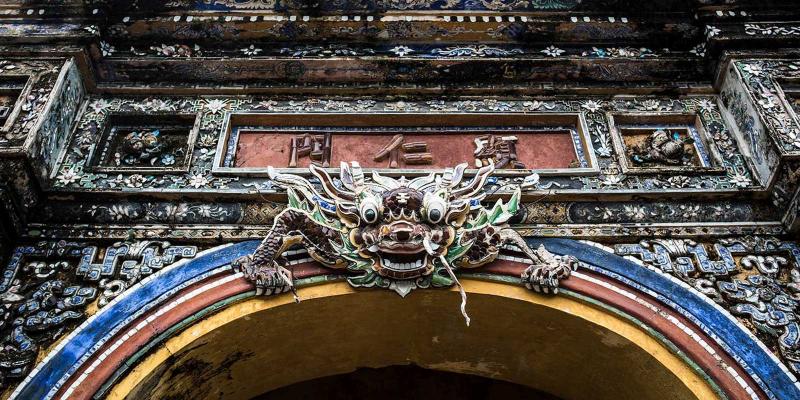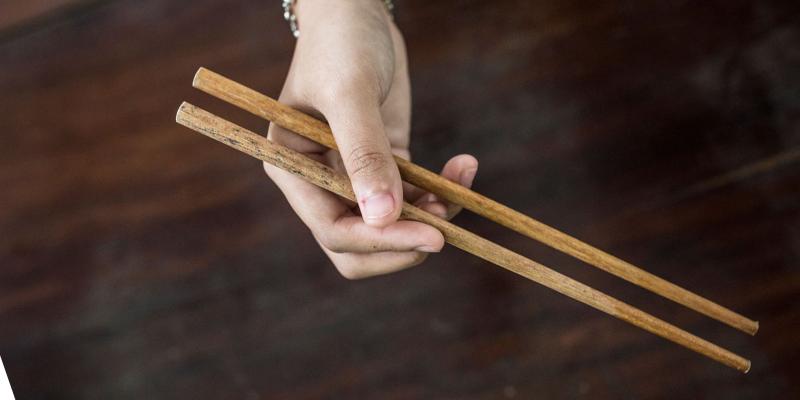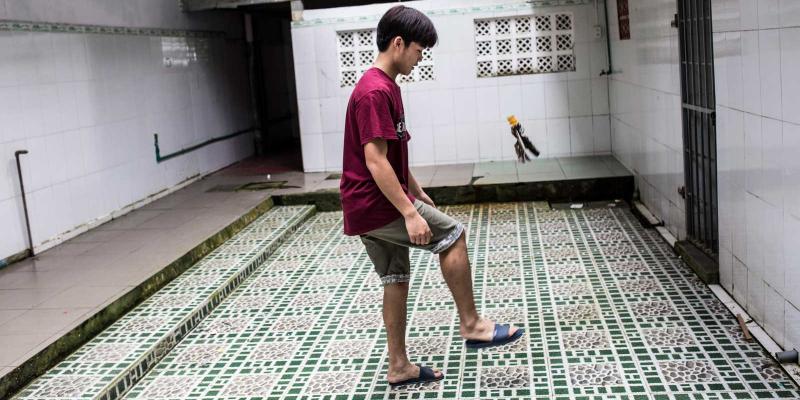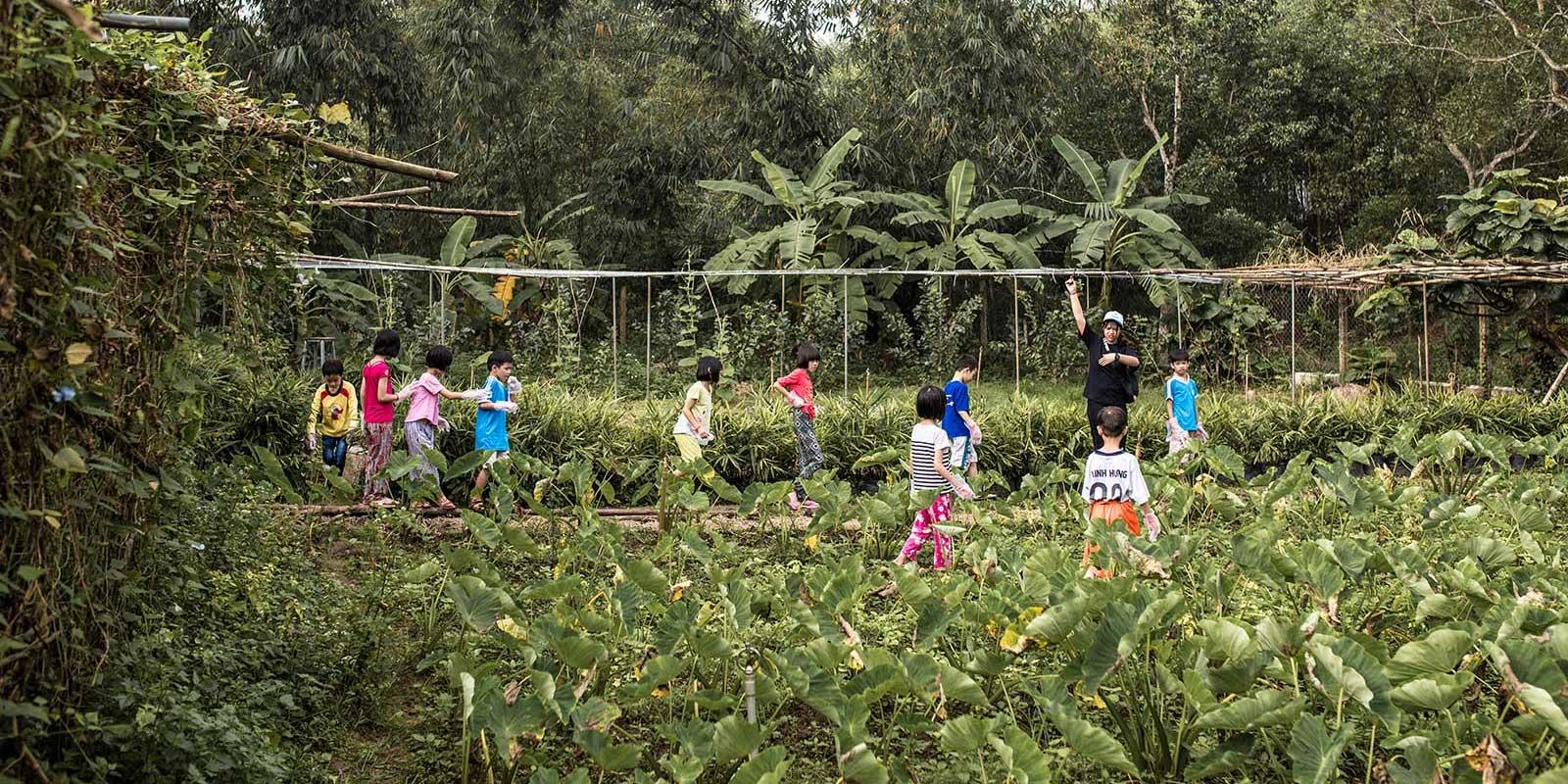
Behind the pagoda there’s a tarmac path that leads between the buildings, bamboos, bushes and palms. Everyone stops when they get to a little bridge over a small stream.
“That’s our mushroom patch,” says Minh Tú, pointing to a tin storage shed a bit further up the path. The mushroom patch provides food for the children and the nuns, just like all the other crops grown in the pagoda’s garden.
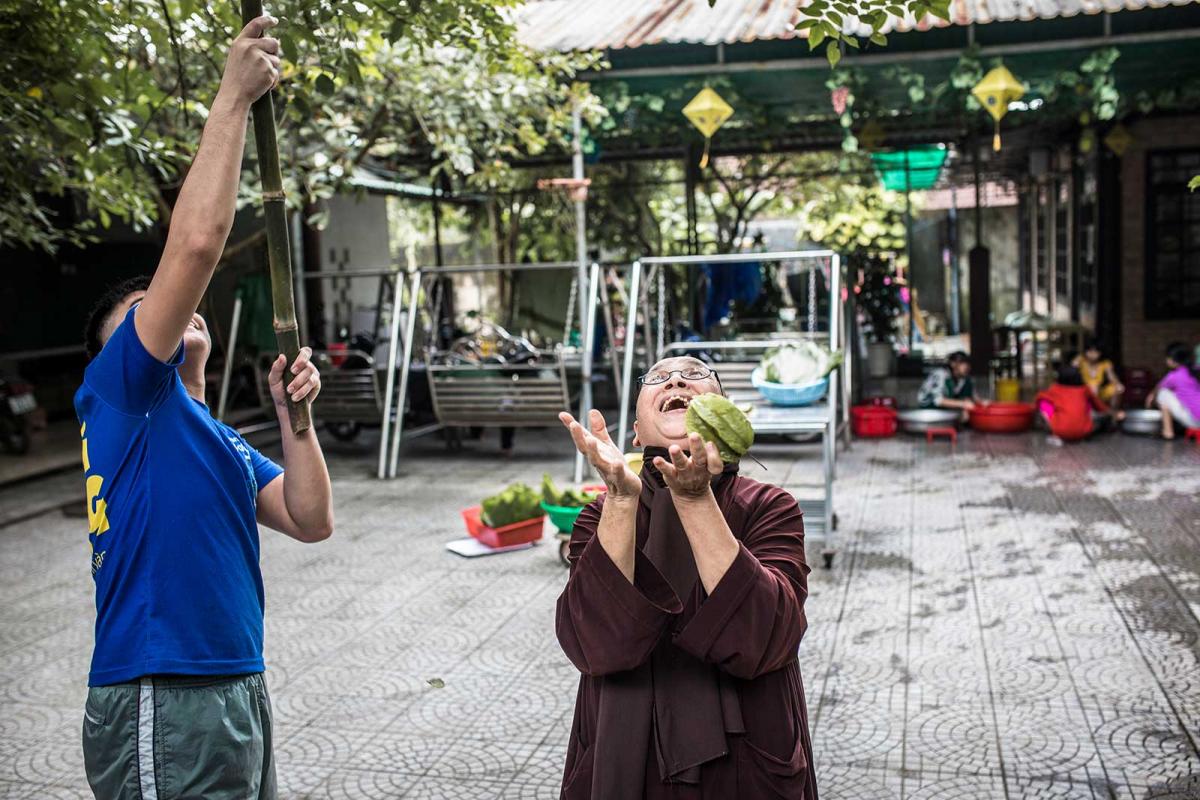
Down a slope, a large garden stretches out. The children come here at least once a week to learn about growing food and various plants. Here they grow coriander, ginger, lettuce, calabash, cucumber, mint and lots more. The children do the weeding, watering and help with harvesting.
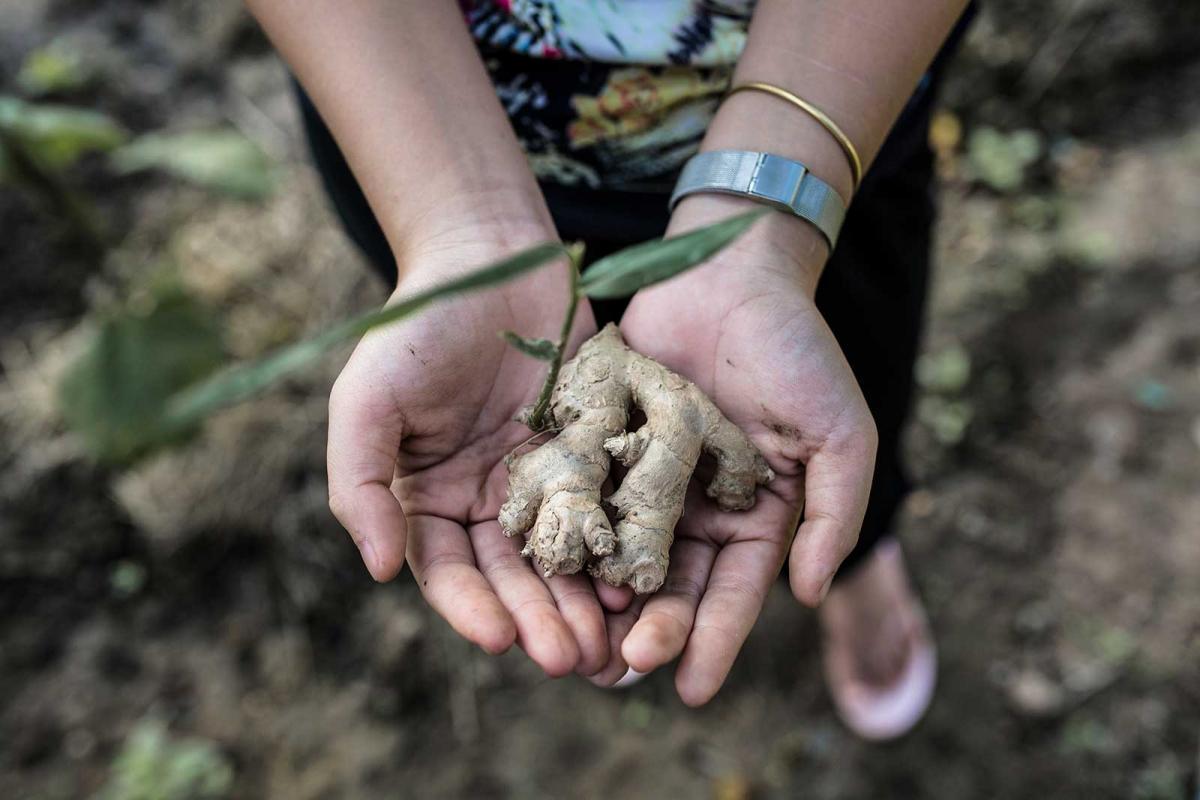
The harvested food is used for cooking in the pagoda’s kitchen, but a lot is also sold, or the herbs and vegetables are used for the lunches that the pagoda sells to passing groups of tourists. Next to the pagoda lies the grave of one of the old emperors, Thieu Tri, and lots of tourists come to see the grave. They can have their lunch at the pagoda while visiting.
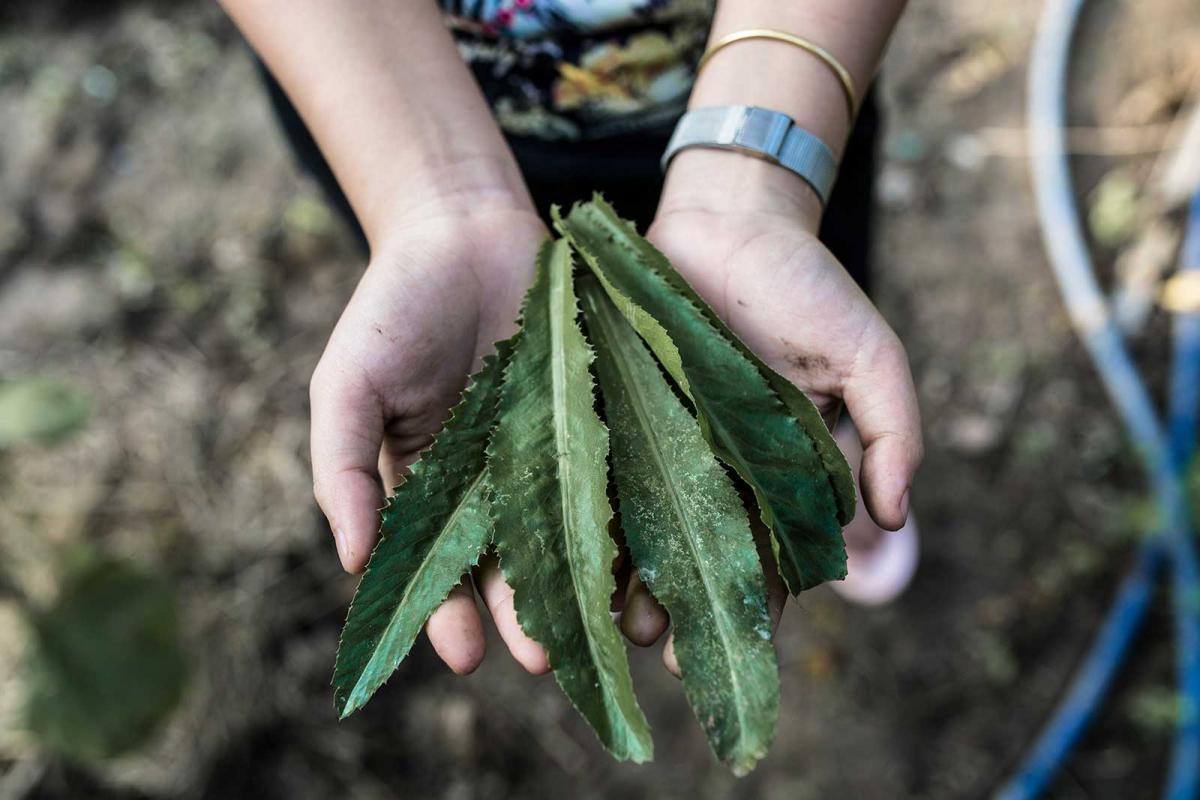
We were given the garden by a family as a gift. It’s a place where the children can have their lunch and learn about how to grow food, and we can sell a little to buy other food,” explains Minh Tú.
Text: Erik Halkjaer
Photo: Jesper Klemedsson
Related stories
Långgatan 13, 647 30, Mariefred, Sweden
Phone: +46-159-129 00 • info@worldschildrensprize.org
© 2020 World’s Children’s Prize Foundation. All rights reserved. WORLD'S CHILDREN'S PRIZE®, the Foundation's logo, WORLD'S CHILDREN'S PRIZE FOR THE RIGHTS OF THE CHILD®, WORLD'S CHILDREN'S PARLIAMENT®, WORLD'S CHILDREN'S OMBUDSMAN®, WORLD'S CHILDREN'S PRESS CONFERENCE® and YOU ME EQUAL RIGHTS are service marks of the Foundation.



